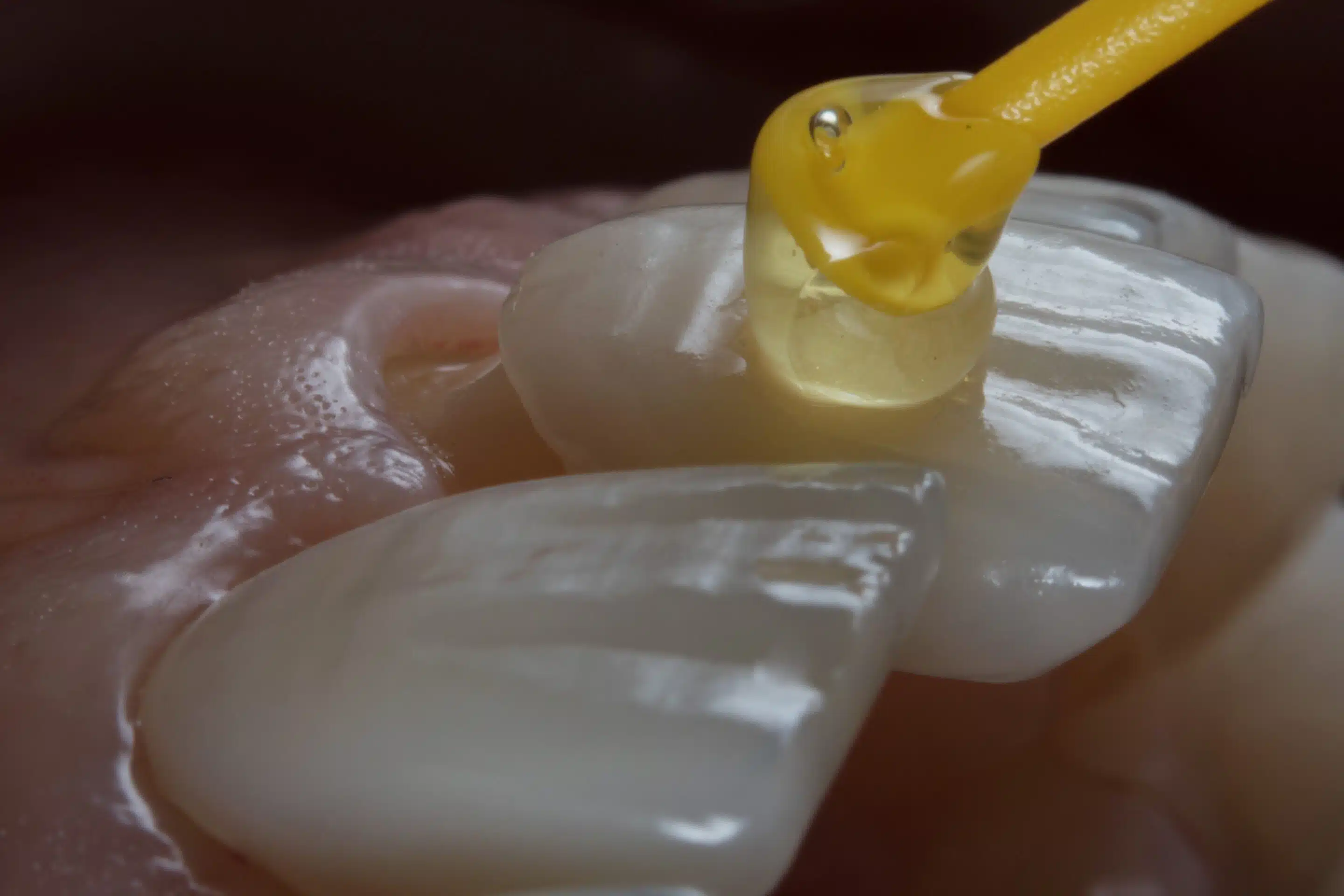Cosmetic dentistry has come a long way in helping individuals achieve the smile of their dreams. Two popular options for enhancing one’s smile are porcelain and composite veneers. While they share some similarities, they also have distinct differences. In this article, we’ll delve into the differences between porcelain vs composite veneers to help you understand which are best suited for your specific needs.
What Are Porcelain Veneers
Porcelain veneers are custom-made, thin shells of porcelain that a dentist bonds to the front surface of your teeth. Crafted by a skilled technician in a dental laboratory, these veneers require a high level of expertise and time to create. This makes them more expensive than composite veneers. The process starts with your dentist removing a small amount of enamel from your tooth to make room for the veneer. Impressions of your teeth are then sent to the lab, where the technician handcrafts the porcelain veneers to match your natural teeth. This irreversible procedure requires at least two visits to the dentist.
Advantages of Porcelain Veneers:
- Superior aesthetics: Porcelain veneers offer exceptional colour matching and are able to replicate the translucency and texture of natural teeth more accurately than composite veneers.
- Durability: Porcelain veneers are extremely durable and long lasting, with most patients enjoying their veneers for on average 10 to 15 years with proper care.
- Stain-resistant: Porcelain veneers are more resistant to stains compared to composite veneers, keeping your smile brighter for longer.
Disadvantages of Porcelain Veneers:
- Price: Porcelain veneers are more expensive than composite veneers due to the high-quality materials, extensive lab work and additional appointments required.
- Permanent procedure: A thin layer of your natural tooth enamel must be removed before the veneer can be applied by your dentist. This is irreversible.
- Irreparable: If a porcelain veneer is damaged, it cannot be repaired and must be replaced, which can be costly.
- Longer treatment time: It can take two to three dental appointments to design, prepare and fit the new veneers properly onto your teeth.
What Are Composite Veneers
Composite veneers, on the other hand, are made of composite resin material and are applied directly to the front surface of your teeth. Unlike porcelain veneers, composite veneers require minimal to no preparation of your natural tooth, making the procedure less invasive and often completed in a single appointment. A dentist applies the composite material in layers, shaping and sculpting it to achieve the desired aesthetic. Once the composite veneer is sculpted, it is hardened using a special light and polished to match the texture of your natural teeth.
Advantages of Composite Veneers:
- Cheaper Price: Composite resin veneers are generally more cost-effective than porcelain veneers, making them more accessible to patients.
- Repairability: If a composite veneer is damaged, it can be easily repaired by your dentist, making it a more convenient and cost-effective solution.
- Faster treatment time: Composite veneers can usually be applied in a single appointment.
- No or minimal tooth preparation: Composite veneers can require no or minimal tooth enamel removal for placement. Making it a more conservative option in some cases.
Disadvantages of Composite Veneers:
- Aesthetic limitations: Composite veneers may not provide the same level of colour matching and translucency as porcelain veneers, resulting in a less natural appearance.
- Durability: Composite veneers have a shorter lifespan than porcelain veneers, typically lasting on average between 5 to 7 years, depending on care.
- Prone to staining and chipping: Composite veneers are more susceptible to staining and chipping compared to porcelain veneers.
How To Choose: Porcelain vs Composite Veneers
When it comes to deciding between porcelain and composite veneers, several factors should be considered. Firstly, the financial investment between the two options does differ and is an important consideration to make. Porcelain veneers are excellent for their durability and aesthetics. However, composite veneers can provide a more affordable option.
Secondly, consider the timeframe required for each treatment option. If you need a quicker cosmetic solution, composite veneers may be suitable due to their shorter treatment duration. Porcelain veneers, on the other hand, require more time due to lab work and multiple appointments.
The extent of your dental imperfections is another important factor. If you require more substantial dental enhancements, porcelain veneers may be more appropriate. However, for mild imperfections or gap closures, composite veneers can be sufficient.
Lastly, it is crucial to consult with a dental professional who understands your specific dental condition, needs and aesthetic preferences. They can assist you in selecting the most appropriate veneers for your situation. In conclusion, weighing the advantages and disadvantages of each option and seeking professional advice is essential to making an informed decision.
Conclusion
Both composite and porcelain veneers offer unique benefits that cater to a range of dental needs. It’s essential to weigh the advantages and disadvantages of each option and consult with a dental professional to make an informed decision.
At Beaches Dental Mona Vale, we’re dedicated to helping you choose the best veneer option for your lifestyle, budget, and desired outcome. Don’t hesitate to contact us to schedule a consultation and discuss your options.

